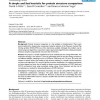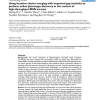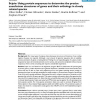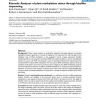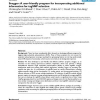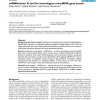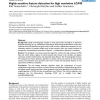BMCBI
2008
13 years 11 months ago
2008
Motivation: In the last years more than 20 vertebrate genomes have been sequenced, and the rate at which genomic DNA information becomes available is rapidly accelerating. Gene du...
BMCBI
2008
13 years 11 months ago
2008
Background: Innumerable biological investigations require comparing collections of molecules, cells or organisms to one another with respect to one or more of their properties. Al...
BMCBI
2008
13 years 11 months ago
2008
Background: Protein structure comparison is a key problem in bioinformatics. There exist several methods for doing protein comparison, being the solution of the Maximum Contact Ma...
BMCBI
2008
13 years 11 months ago
2008
Background: Due to recent progress in genome sequencing, more and more data for phylogenetic reconstruction based on rearrangement distances between genomes become available. Howe...
BMCBI
2008
13 years 11 months ago
2008
Background: The recent emergence of high-throughput automated image acquisition technologies has forever changed how cell biologists collect and analyze data. Historically, the in...
BMCBI
2008
13 years 11 months ago
2008
Background: For many types of analyses, data about gene structure and locations of non-coding regions of genes are required. Although a vast amount of genomic sequence data is ava...
BMCBI
2008
13 years 11 months ago
2008
Background: There is great interest in probing the temporal and spatial patterns of cytosine methylation states in genomes of a variety of organisms. It is hoped that this will sh...
BMCBI
2008
13 years 11 months ago
2008
Background: There has been considerable effort focused on developing efficient programs for tagging single-nucleotide polymorphisms (SNPs). Many of these programs do not account f...
BMCBI
2008
13 years 11 months ago
2008
BMCBI
2008
13 years 11 months ago
2008
Background: Liquid chromatography coupled to mass spectrometry (LC/MS) is an important analytical technology for e.g. metabolomics experiments. Determining the boundaries, centres...

